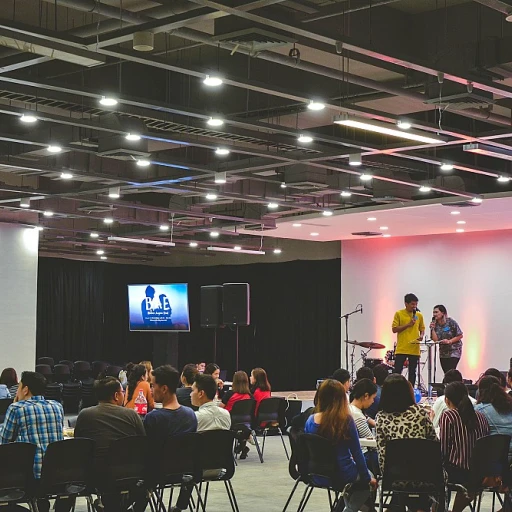Understanding the Role of Suggestion Boxes
{\n \"result\": \"Exploring the Influence of Suggestion Boxes
\nIn the realm of employee retention, suggestion boxes serve as a valuable tool to enhance engagement and foster a communicative environment. These boxes traditionally act as a medium for employees to express thoughts and ideas which can directly impact organizational growth. Modern suggestion boxes, akin to humorous ways to appreciate employees, give employees a voice in a non-intrusive manner.
\nUnderstanding their role involves recognizing the potential impact they possess. These suggestion channels function similar to a donation box for ideas, where employees contribute anonymously or openly. The suggestion products, be it an item pack or an innovative idea, are submitted in various forms, often compared to placing ballots in a lock-secured wall display holder. By engaging with these anonymous contributions, companies can enhance transparency, promote innovation, and elevate employee satisfaction.
\nThe appeal of suggestion boxes lies in attributes such as simplicity and accessibility, making them similar to a product item, straightforward to engage with. Implementing these boxes involves establishing clear parameters, such as a minimum order or maximum order for idea intake, ensuring an organized list compare system where suggestions are categorized effectively. Institutions may add a quick list for prioritizing ideas or allocate a minimum review timeframe, creating a structured approach to processing and analyzing feedback.
\nOverall, understanding the pivotal role of suggestion boxes is essential for any organization aiming to improve retention and engagement rates. These tools not only provide a platform for dialogue but also reflect the company’s commitment to valuing employee input.\n\"}
Designing an Effective Suggestion Box System
Crafting a User-Friendly Suggestion Box
To boost employee retention through suggestion boxes, it's essential to design them with accessibility and practicality in mind. These boxes should not only be seen as mere donation boxes but as proactive tools for collecting valuable employee insights.
Strategic Placement
Placing suggestion boxes in high-traffic areas such as break rooms and near wall card holders can significantly encourage participation. Additionally, digital suggestion options via an online portal or app can complement physical boxes, making it easier for remote employees to contribute their ideas as well.
Ensuring Anonymity and Security
Implementing a secure system is crucial. A locked suggestion box with a unique item code ensures confidentiality, which can encourage more honest and constructive feedback. The box should also have a clear label or display indicating it is intended for employee input, not to be confused with any product item or donation box.
Variety and Flexibility
To cater to the diverse needs of employees, consider offering multiple feedback methods such as physical ballot boxes, digital suggestion forms, and regular open forums. These options allow employees to choose the medium they are most comfortable with, thus enhancing participation rates.
Implementing Multiple Categories
Design the suggestion form to cover various categories such as work environment, process improvements, and employee benefits. This structured approach allows for targeted feedback that can be quickly sorted and addressed. Ensure the form is clear, concise, and possibly integrated with a quick list selection feature for easy completion.
Maintaining Engagement
To sustain interest and participation, periodically update employees on any changes implemented based on their suggestions. Recognition and small incentives, such as public acknowledgment or gift card rewards, can further motivate employee contributions. For creative ways to keep your team motivated, check out these lighthearted quotes to boost employee morale.
Encouraging Employee Participation
Fostering Employee Involvement for Meaningful Contributions
Gathering employee input through suggestion boxes can significantly boost engagement and give employees a sense of ownership in organizational changes. However, encouraging active participation may require more than just placing a suggestion box on a wall. Here are some methods to maximize employee involvement:- Promote the System: To ensure employees are aware of the suggestion box initiative, promote it in visible areas such as near donation boxes, or even as a part of email signatures and newsletters. This encourages employees to think about submitting suggestions regularly.
- Incorporate Recognition Programs: By recognizing contributions publicly, employees feel valued for their suggestions. Develop a recognition system where submitted suggestions yield points or a nomination in a creativity award program.
- Ensure Anonymity: An important attribute of a suggestion box is anonymity. Use a lock and key system to maintain confidentiality. This reassures employees that their feedback is confidential, which can often lead to more honest and productive suggestions.
- Facilitate Convenient Access: Use different methods like ballot cards or digital entries to cater to different preferences. Ensure that suggestion boxes are accessible to all staff members, including those on different shifts or working remotely.
- Communicate Clearly: Guide employees on the types of suggestions needed with a quick list or category suggestion that helps align their ideas with organizational goals, improving the relevancy of the feedback collected.
Analyzing and Implementing Feedback
From Suggestion to Action: The Feedback Process
Incorporating a robust system for analyzing and implementing employee feedback from suggestion boxes can significantly enhance employee retention rates. When employees see their suggestions being taken seriously and acted upon, it fosters a sense of belonging and demonstrates the company's commitment to their workforce. First, it's crucial to establish a method for categorizing the feedback. This could involve creating a quick list of suggestion categories such as "work environment enhancements," "process improvements," or "employee benefits." Each suggestion can be attributed an item code or category suggestion, making it easier to prioritize and address issues efficiently. Once the feedback is categorized, a comparison should be made against the company's current practices to consider possible improvements. This involves evaluating whether the suggestions align with organizational goals and if implementing them would significantly impact employee satisfaction. Analyzing selling quantities of feedback topics can also provide insights into prevailing concerns. It's essential to determine whether a minimum order or maximum order of resources is needed to implement a particular suggestion. For instance, if an employee suggests adding more ergonomic chairs, evaluate the quantity product required and compare it against the available budget. The organization should also be open to initiating a donation box for specific items suggested by employees, motivating others to contribute. Actions taken based on the feedback should be transparent. Establish a communication system where employees are informed about the progress of their suggestions, whether they are accepted or deemed unfeasible. A display unit, like a bulletin board or wall area, can serve as a suggestion box holder where updates are consistently provided, perhaps using a ballot card system for transparency. Lastly, the impact of the changes should be monitored and measured. Implementing a code product or a feedback loop can help track the outcomes of specific suggestions over time, providing insights into how these changes affect overall employee retention. This data can guide future organizational strategies, ensuring continuous improvement in engagement and retention efforts.Measuring the Impact on Employee Retention
Evaluating the Influence of Suggestion Boxes on Retention Rates
To truly understand the implications of suggestion boxes on employee retention, it is crucial to measure their impact effectively. While these boxes serve as a practical avenue for receiving employee feedback, quantifying their influence on morale and loyalty requires a methodical approach.
Start by establishing clear metrics to assess the success of your suggestion box system. Look at both quantitative and qualitative data pieces. Quantitative measures could include the number of suggestions received, response rate to suggestions, and the number of suggestions implemented. Qualitative metrics, although a bit more challenging, could involve surveying employees about their satisfaction with the suggestion box initiative or analyzing trends in the types of ideas submitted.
- Track the submission frequency in each suggestion box. Compare different departments or locations for a broader understanding of engagement.
- Analyze the diversity of suggestions. A variety of topics indicated by item code or category suggestion can shed light on different facets of workplace environment that need addressing.
- Measure the impact of implemented suggestions. This could include improved employee satisfaction, productivity, or even monetary savings for the organization.
- Inventory metrics such as item minimum or maximum order of feedback to prioritize action on suggestions that appear most frequently or affect larger quantities of employees.
After collating this data, it's vital to display your findings transparently. A suggestion box report or a related ‘employee feedback pack’ could be shared periodically. Such transparency not only fosters trust but also encourages further participation.
Finally, continuously refine your process. Like any other product item within the office strategy, suggestion boxes need periodic reviews and updates to stay relevant. Lock in improvements based on the feedback of users and managers alike.
Overcoming Challenges in Using Suggestion Boxes
Addressing Potential Hurdles with Suggestion Boxes
Implementing suggestion boxes can be a powerful tool for enhancing employee retention, but it's not without its challenges. Recognizing and overcoming these hurdles is crucial to ensure that the system is effective and beneficial for all involved.
Ensuring Anonymity and Security
One of the primary concerns with suggestion boxes is maintaining the anonymity of employees. Using a secure suggestion box with a lock can help alleviate fears of retribution. It's essential to ensure that the box is placed in a discreet location, such as a wall-mounted holder, where employees feel comfortable submitting their ideas without being observed. Additionally, implementing a digital suggestion system with encrypted data can further protect employee identities.
Encouraging Genuine Participation
While designing an effective suggestion box system, it's important to encourage genuine participation. Some employees may hesitate to contribute due to a lack of trust in management or skepticism about whether their suggestions will be considered seriously. To combat this, management should regularly communicate the value of employee input and showcase examples of implemented suggestions. This can be done through internal newsletters or a dedicated display board where successful ideas are highlighted.
Managing Feedback Volume
As the number of suggestions increases, managing the feedback can become overwhelming. It's crucial to establish a system to categorize and prioritize suggestions based on their potential impact and feasibility. A quick list or category suggestion system can help streamline this process. Additionally, assigning a dedicated team to review and implement suggestions can ensure that valuable ideas are not overlooked.
Balancing Transparency and Confidentiality
Transparency is key to building trust, but it must be balanced with confidentiality. While it's important to keep employees informed about the status of their suggestions, care should be taken not to disclose sensitive information. Providing regular updates on the progress of suggestion implementation can help maintain transparency without compromising confidentiality.
Measuring and Communicating Impact
Finally, measuring the impact of suggestion boxes on employee retention is essential. This involves tracking metrics such as employee engagement scores and turnover rates before and after implementing the suggestion system. Communicating these results to the workforce can reinforce the value of their contributions and encourage continued participation.












